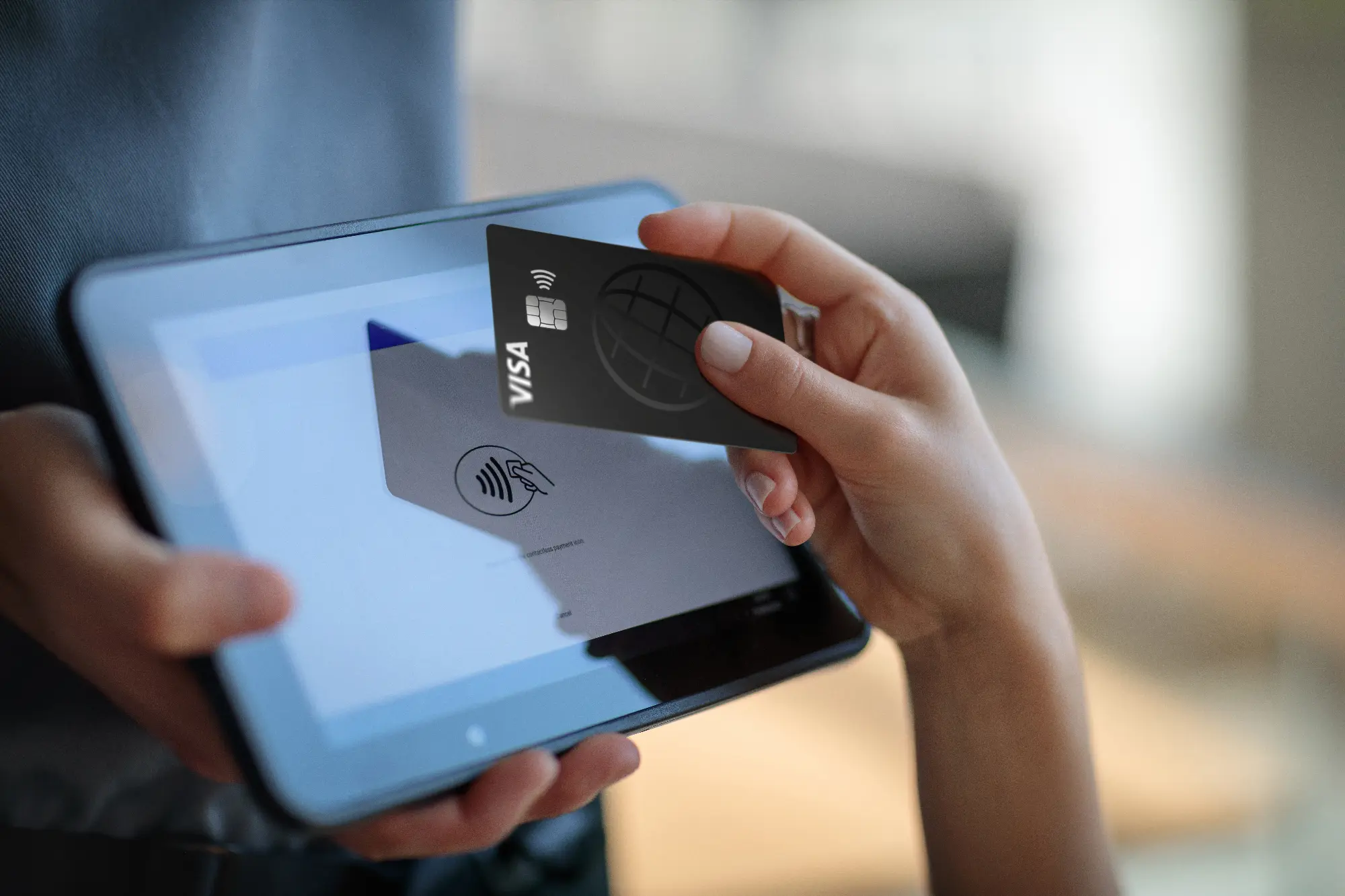Table of contents:
- Different Types of Contactless Payment
- Definition of Contactless Payment
- The Technology Behind Contactless Payment
- Card-Based Contactless Payments
- Mobile-Based Contactless Payments
- Wearable Payments
- Future Developments in Contactless Payment
- Partnering with oona
Different Types of Contactless Payment
Contactless payment methods have grown beyond contactless cards to also include mobile wallets and wearables. The ease and speed with which customers can make contactless payments has boosted its popularity in recent years, so read on to understand the technology and use behind different types of contactless payment methods.
Definition of Contactless Payment
Contactless payment is when a contactless card or smart device wirelessly connects with a payment reader and transfers tokenized bank data to make a purchase.
This method has been incorporated across multiple industries, from retail through to hotels, because consumers love the speed and ease that it provides. For businesses, going contactless makes payment methods more streamlined and efficient as it reduces labor costs and allows for faster processing.
The Technology Behind Contactless Payment
So, how does contactless payment actually work?
To make a payment, the customer presents their contactless-enabled card or smart device (more on those later) to a Point-of-Sale (POS) device that’s enabled with near-field communication (NFC) or radio frequency identification (RFID) technology. This technology establishes a wireless connection between the two devices, which allows for payment data to be transferred.
The payment information sent is tokenized, creating a safe and secure way to purchase goods. NFC technology is enabled across multiple different contactless payment systems, from mobile wallets to contactless cards.
Another way customers can make a contactless payment is via QR code. A business can generate a square-shaped pixel barcode to be scanned with a smartphone. The code then takes customers to a payment page to complete the transaction.
There’s a few pros and cons when it comes to QR codes. While they only require a smartphone to use, scanning the QR code can often be confusing and can create an added step in the payment process.
Card-Based Contactless Payments
Contactless cards are the most common form of contactless payment and are easily identifiable – they have a symbol with four curved lines that looks similar to a Wi-Fi symbol on one side. Contactless cards can be either debit or credit cards. Here’s the main differences between the two.
With contactless debit cards, customers can make purchases using funds from their debit account and so are limited by the amount of funds available in that account. As contactless payments under a certain amount don’t require a pin or signature to complete, stolen or lost cards can be used to make fraudulent transactions.
With contactless credit cards, customers are not as limited. Credit cards give customers access to a line of credit issued by a bank and can offer better fraud protection compared to debit cards.
Mobile-Based Contactless Payments
Another popular contactless payment method is the mobile wallet. These wallets are either built into a smartphone or installed via an app and store credit or bank card information. Some built-in mobile wallet examples include Apple Pay, Google Pay, and Samsung Pay.
These mobile wallets connect directly to bank accounts and are used in the same way as contactless cards. Consumers simply hold their smartphone device to a contactless-enabled POS terminal to make a payment.
Another form of mobile contactless payment is Peer-to-Peer (P2P) payments. This method lets people send money directly to another person. Some of the most popular transfer apps out there include Venmo, Paypal, and Cash App.
All that’s needed to make a payment is the email address or phone number of the recipient (who also has an account on the chosen transfer app) which is entered into the app so that the transaction can be processed.
Wearable Contactless Payments
Downsizing even further from mobile wallets are smartwatches, which use the same NFC or RFID technology. To use a smartwatch for payments, it first needs to be connected to a smartphone with mobile wallet functionality installed. Once synced, it's then ready to use. Simply hold the watch face up to the contactless payment device and it’s done!
Smartwatches are easy to use and mean there’s less things to carry in order to make a purchase. However, smartwatches are prone to security risks as some lack two-factor authentication and higher levels of encryption.
Lastly, another contactless payment method is through RFID bracelets. RFID bracelets work by storing pre-loaded credit or by connecting directly to customer bank accounts. These bracelets are especially popular at events like music festivals, as they can be used to make payments, get into certain areas, store coupons, or as a form of identification all-in-one.
Partnership with oona
The best way to get the most out of your contactless payment system is to pair with a contactless device provider that has security, speed, and customer ease at the core of its design. oona devices give businesses access to high-performance NFC technology, the flexibility of fixed or mobile options and the durability of professional-grade devices that are water and dust-resistant.
Share this
You May Also Like
These Related Stories
Payment Fraud

What Payment Hardware Do You Need?

